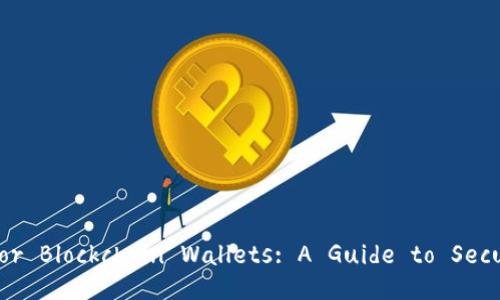Comprehensive Design Solutions
2025-06-17
Blockchain wallets are digital tools that allow users to store, send, and receive cryptocurrencies. Unlike traditional wallets, which hold physical currency, blockchain wallets manage a user's private and public keys, enabling transactions on various blockchain networks. They are fundamental in facilitating the adoption of cryptocurrencies by providing secure access to digital assets.
## Key Considerations in Wallet Design Before diving into specific design solutions, it's crucial to understand the key considerations that influence wallet design. These include security, usability, scalability, and compatibility with different blockchain protocols. ### 1. SecuritySecurity is paramount in blockchain wallet design. Users need to feel confident that their assets are protected from theft, hacking, and loss. Implementing multi-factor authentication (MFA), strong encryption, and biometric security measures can significantly enhance safety. Additionally, educating users about best practices to protect their wallets, such as not sharing private keys and using hardware wallets, enhances security protocols.
### 2. UsabilityThe usability of a blockchain wallet plays a significant role in user satisfaction. A well-designed interface is intuitive, making it easy for users to navigate through different functionalities. The wallet should provide a seamless user experience, allowing users to execute transactions, view their balances, and manage their settings without confusion. Incorporating features like guided tutorials for new users can further improve usability.
### 3. ScalabilityAs the blockchain ecosystem grows, the wallet must be able to scale with it. This includes supporting not just popular cryptocurrencies but also newer tokens and tokens that use different blockchain protocols. A scalable wallet architecture should allow for easy updates and integrations with various blockchain networks, providing users with flexibility and choice.
### 4. CompatibilityCompatibility across platforms is essential for a blockchain wallet. The design should ensure that the wallet functions well on various devices—be it mobile, desktop, or web-based. Furthermore, supporting multiple operating systems enhances accessibility and user reach. A responsive design that adapts to different screen sizes and resolutions is also critical.
## Design Elements for Blockchain Wallets Now that we have outlined the key considerations in wallet design, we will explore specific design elements that contribute to creating a successful blockchain wallet application. ### 1. User Interface (UI)The UI of a blockchain wallet should be clean, minimalist, and user-centric. Adding visual hierarchies such as larger fonts for key information (like balance) and using distinguishable colors for alerts and notifications can help users navigate through the wallet efficiently. Icons should be easily recognizable and consistent throughout the application to enhance user understanding.
### 2. User Experience (UX)The UX should focus on the user's journey through the wallet application. Implementing a straightforward onboarding process can help new users engage more effectively. This could involve step-by-step guidance through creating a new wallet, verifying identity, and understanding how to perform transactions. Feedback mechanisms, such as confirming actions with visual or auditory cues, can also improve the overall experience.
### 3. Transaction History and ManagementUsers need to keep track of their transactions for various reasons, including budgeting and tax compliance. Thus, providing a clear, intuitive interface for viewing transaction histories is necessary. Users should have the ability to filter and sort transactions, as well as access receipts or detailed descriptions for each transaction. Introducing analytics or insights into spending habits can also enhance user decision-making.
### 4. Security Features DisplayDisplaying security features prominently within the wallet can reassure users about the safety of their assets. This could include notifications about successful logins, alerting users to potentially suspicious activities, and the status of their security settings. Providing users with control over their privacy and security preferences can significantly enhance trust.
### 5. Accessibility FeaturesEnsuring that the wallet is accessible to all, including users with disabilities, is crucial. This includes optimizing the wallet for screen readers, providing alternative text for images, and ensuring color contrast is adequate for users with visual impairments. Additionally, implementing audio cues for actions can enhance usability for individuals with limited mobility.
## Conclusion In conclusion, a well-designed blockchain wallet is critical for promoting user confidence in cryptocurrency transactions. By focusing on key considerations like security, usability, scalability, and compatibility, and incorporating essential design elements, developers can create an optimal user experience. As we look to the future, continuous improvement based on user feedback will be key to ensuring these wallets remain relevant and effective in a rapidly changing digital landscape. --- ## FAQs about Blockchain Wallet Design Solutions ### 1. What are the most common security features that should be included in a blockchain wallet?When designing a blockchain wallet, security is of utmost importance. Common security features include:
- **Multi-Factor Authentication (MFA):** This adds an extra layer of security by requiring users to provide multiple forms of identification before accessing their wallets. - **Encryption:** Robust encryption protocols protect sensitive data, making it difficult for unauthorized users to access private keys or transaction information. - **Biometric Authentication:** Incorporating fingerprint or facial recognition can offer swift and secure access for users. - **Backup Options:** Providing users with options to securely back up their wallets ensures they can recover their assets in case of loss or damage. - **Security Alerts:** Notifying users of suspicious activities, such as logins from unfamiliar devices, reinforces security measures. Through continuous updates and user education, developers can further fortify the security of blockchain wallets. ### 2. How can a blockchain wallet be made user-friendly for non-technical users?To make a blockchain wallet user-friendly for non-technical users, several strategies can be implemented:
- **Simplified Onboarding Process:** Create a straightforward onboarding process, including easy-to-follow instructions and visual aids. - **Clear Terminology:** Use plain language instead of technical jargon to describe functions and features. - **Intuitive Design:** Ensure the wallet's interface is intuitive and visually appealing, aiding navigation without overwhelming users with information. - **Help Resources:** Offer easily accessible help resources, such as FAQs, video tutorials, and live chat support, to assist users when needed. - **Feedback Mechanisms:** Implement user feedback systems to understand challenges faced by users and continuously improve their experience. By emphasizing usability, developers can cultivate an inclusive environment that encourages greater participation in cryptocurrency. ### 3. What are the challenges faced when developing a scalable blockchain wallet?Developing a scalable blockchain wallet poses various challenges, including:
- **Increased Transaction Volume:** As cryptocurrency adoption grows, wallets must handle a significantly higher volume of transactions without compromising speed or efficiency. - **Integration with Multiple Blockchains:** Supporting various blockchain protocols requires a flexible architecture that allows for easy integration and updates. - **Resource Management:** Managing resources effectively to accommodate increasing user demand while ensuring performance stability can strain development. - **Compliance with Regulations:** As laws and regulations surrounding cryptocurrencies evolve, the wallet must adapt accordingly to remain compliant while still providing a seamless user experience. - **Continuous Security Updates:** As security threats evolve, maintaining scalability while ensuring robust security measures is crucial. Addressing these challenges requires dedicated development efforts and ongoing innovation. ### 4. How important is cross-platform compatibility for blockchain wallets?Cross-platform compatibility is extremely important for blockchain wallets for several reasons:
- **Accessibility:** Users prefer flexibility in accessing their wallets on various devices (desktop, mobile, tablet), and a compatible wallet ensures they can do so seamlessly. - **User Preference:** Different users have varying preferences for platforms; supporting all major operating systems increases user acquisition and satisfaction. - **Multi-Device Synchronization:** Users often switch between devices. Compatibility ensures that user data syncs across platforms, allowing for a consistent experience. - **Market Reach:** A wallet that functions well on multiple platforms expands the potential user base, allowing developers to reach different demographics. - **User Reliability:** A consistent experience across platforms fosters trust, encouraging users to adopt and recommend the wallet to others. In an increasingly mobile-driven world, cross-platform compatibility promotes broader adoption of blockchain wallets. ### 5. What role does user feedback play in the design and improvement of blockchain wallets?User feedback is invaluable in the design and ongoing improvement of blockchain wallets for the following reasons:
- **Identifying Pain Points:** Users can highlight specific challenges they face, allowing developers to address these issues directly. - **Feature Requests:** User suggestions can guide developers in prioritizing new features or enhancements that align with user needs. - **Usability Testing:** Observing how real users interact with the wallet can uncover usability issues that designers may not initially recognize. - **Building Trust:** Actively soliciting and implementing user feedback demonstrates a commitment to user satisfaction, fostering loyalty and relationship-building. - **Adapting to Trends:** As the cryptocurrency landscape evolves, user feedback helps wallet developers stay ahead of trends and shifting preferences. By embracing user feedback, developers can create a more relevant and user-centered wallet experience that evolves alongside its user base. --- The design solutions for blockchain wallets discussed in this comprehensive guide highlight the significant impact that a user-friendly, secure, and scalable wallet can have on the adoption and trust in cryptocurrencies. As the digital landscape continues to evolve, prioritizing design will be crucial to maintaining user engagement and satisfaction.
